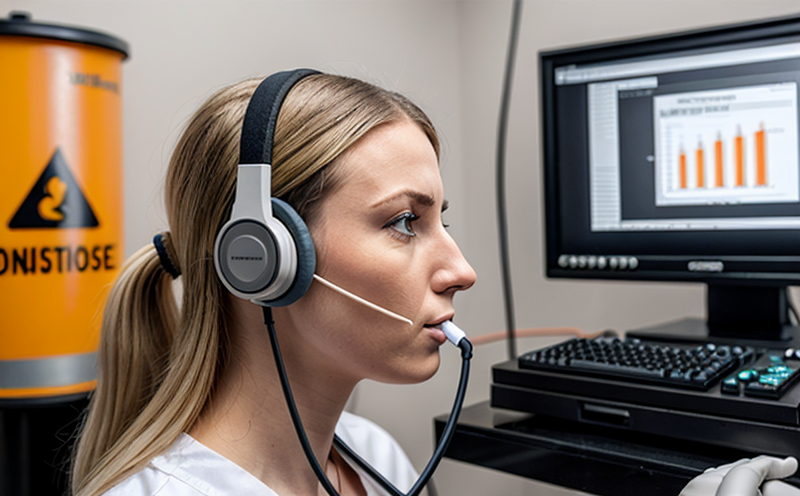ANSI S12.6 Real Ear Attenuation at Threshold Testing (REAT)
The ANSI S12.6 Real Ear Attenuation at Threshold (REAT) test is a critical component of the evaluation process for hearing protection devices (HPDs). This standard ensures that HPDs provide sufficient noise attenuation to protect workers from occupational noise exposure, thereby preventing potential hearing damage. The REAT test evaluates the actual attenuation provided by the HPD as it would be worn on an individual's head in real-world conditions.
The primary goal of this testing is to ensure that the HPD offers adequate protection against harmful levels of sound pressure. Occupational noise exposure can lead to irreversible hearing loss, and thus, it is essential to validate the performance of these devices accurately. The ANSI S12.6 REAT test provides a standardized approach for manufacturers, regulatory bodies, and end-users to assess the real-world effectiveness of HPDs.
The testing procedure involves placing the HPD on a volunteer's head while they are exposed to various sound frequencies. The attenuation at each frequency is then measured using real-ear probes in conjunction with a sound source. This process allows for precise measurement under conditions that closely mimic actual usage scenarios, ensuring that the results reflect real-world performance.
The ANSI S12.6 standard is widely recognized and adopted by industries such as manufacturing, construction, and mining, where workers are frequently exposed to high levels of noise. Compliance with this standard not only ensures worker safety but also helps organizations meet regulatory requirements set forth by bodies like the Occupational Safety and Health Administration (OSHA).
In summary, ANSI S12.6 REAT testing is an indispensable tool for manufacturers looking to produce reliable hearing protection devices that effectively shield workers from hazardous noise levels.
Scope and Methodology
| Test Setup: | The HPD is placed on a volunteer's head, ensuring it fits correctly as it would in real-world conditions. |
| Sound Source: | A calibrated sound source emits sound at various frequencies and intensities to simulate workplace noise environments. |
| Real-Ear Probe Microphones: | These are used to measure the attenuation provided by the HPD at each frequency, ensuring accurate data collection. |
| Data Collection: | Sound intensity is measured both with and without the HPD in place, allowing for precise calculation of the attenuation provided by the device. |
Customer Impact and Satisfaction
- Ensures compliance with international standards (ANSI S12.6).
- Reduces the risk of occupational hearing loss by validating HPD performance.
- Improves worker satisfaction through effective noise protection.
- Saves costs associated with potential health issues and lawsuits related to workplace injuries.
The ANSI S12.6 REAT test directly impacts customer satisfaction by ensuring that the HPDs meet or exceed safety standards, thereby protecting workers from harmful noise levels. This testing process helps companies maintain a safe work environment while also reducing the likelihood of worker dissatisfaction due to discomfort or inefficiency.
Competitive Advantage and Market Impact
- Makes products more attractive to safety-conscious customers, enhancing brand reputation.
- Aids in regulatory compliance, avoiding potential legal issues and fines.
- Promotes a safer work environment, which can improve employee retention rates.
- Facilitates the development of innovative HPDs that meet or exceed industry standards.
The ANSI S12.6 REAT test provides significant competitive advantages for manufacturers by ensuring their products meet strict safety and performance criteria. This standard helps companies stay ahead in a crowded market, where safety and compliance are increasingly important factors for consumers. By demonstrating commitment to worker safety, organizations can differentiate themselves from competitors and attract more conscientious clients.





